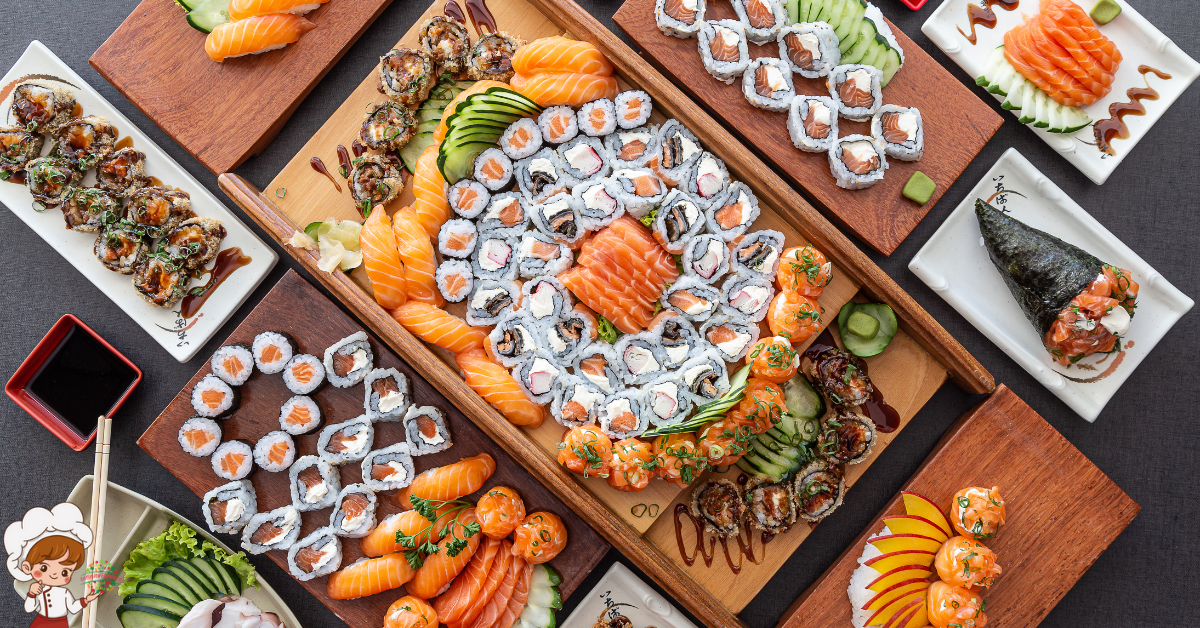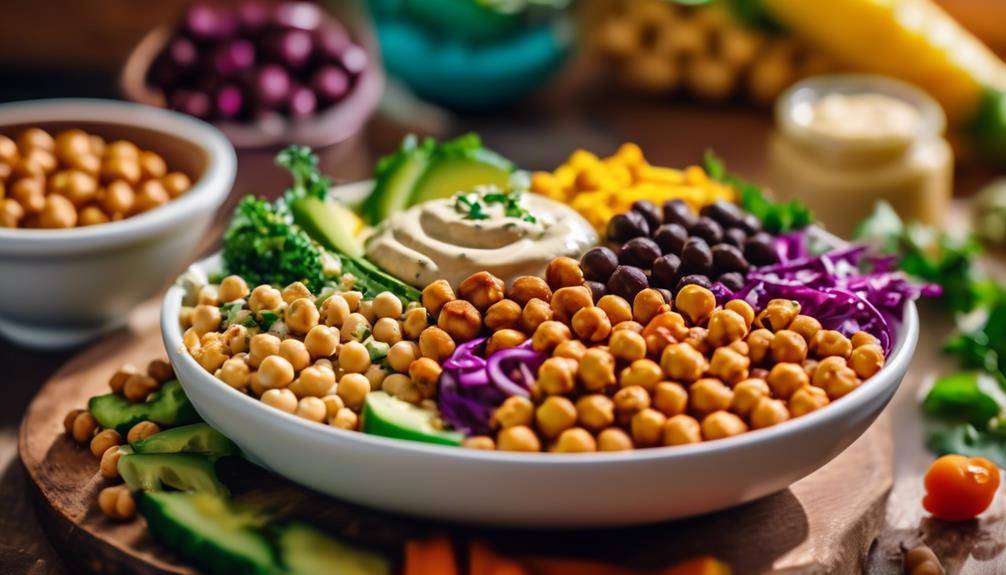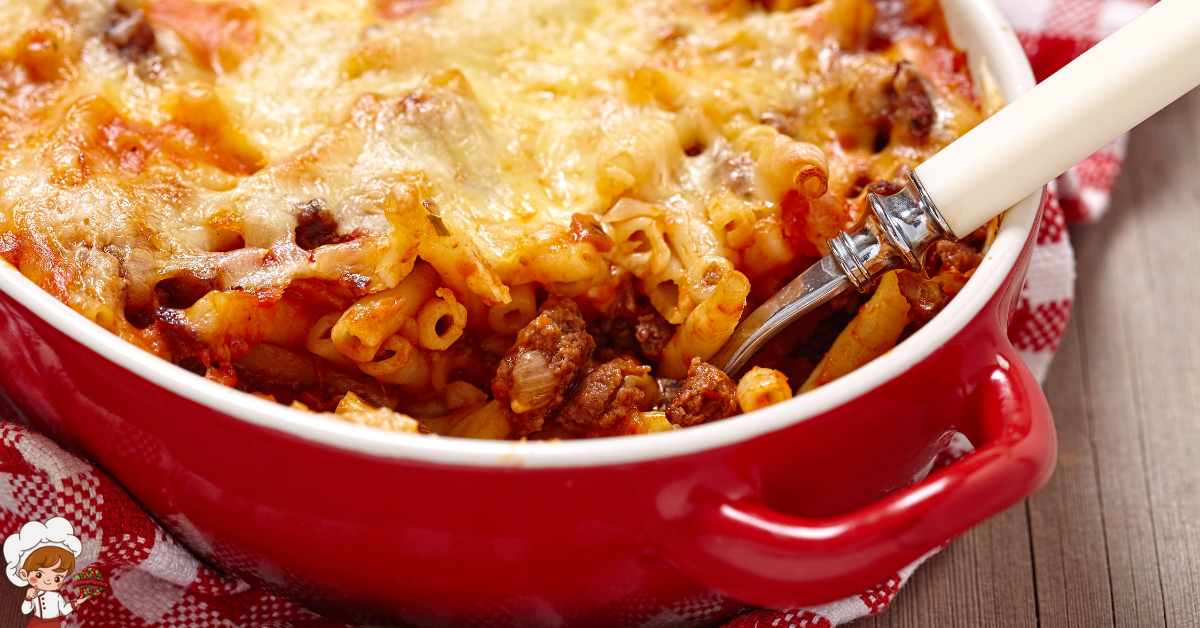The Most Popular Japanese Seafood Dishes

The Most Popular Japanese Seafood Dishes; Dive into the tantalizing depths of Japanese cuisine and embark on a culinary journey through the sea. From the delicate artistry of sashimi to the crispy perfection of tempura, Japan offers a plethora of popular seafood dishes that will leave your taste buds yearning for more. But there’s more to discover, as the ocean’s bounty finds its way into sushi rolls, yakizakana, and comforting bowls of miso soup with an assortment of seafood. Hungry for adventure? The world of Japanese seafood dishes awaits, ready to transport you to a world of flavors you never knew existed.
Sashimi
Sashimi, a traditional Japanese delicacy, is a delectable dish consisting of fresh, raw fish or seafood slices that are skillfully prepared and served without any additional cooking. The presentation of sashimi is an art form in itself, with the utmost care taken to showcase the natural beauty and flavors of the ingredients. The fish or seafood is typically sliced into thin, delicate pieces that are arranged on a plate in an aesthetically pleasing manner. The vibrant colors and textures of the sashimi slices are enhanced by garnishes such as shredded radish, seaweed, or sesame seeds, adding visual appeal to the dish.
There are various varieties of sashimi available, each offering a unique taste experience. The most commonly used fish for sashimi include tuna, salmon, yellowtail, and mackerel. These fish are prized for their high-quality meat, which is rich in flavor and has a buttery texture. Other seafood options for sashimi include squid, octopus, scallops, and shrimp. Each type of seafood has its own distinct taste and texture, providing a range of flavors for seafood enthusiasts to enjoy.
The key to enjoying sashimi lies in its freshness and quality. The fish or seafood used for sashimi should be sourced from reputable suppliers who prioritize freshness and handle the ingredients with care. The slices should be cut with precision and skill, ensuring the perfect thickness and texture. When it comes to sashimi, simplicity is key. The raw ingredients speak for themselves, allowing you to savor the natural tastes and textures of the fish or seafood. So next time you have the opportunity, indulge in the exquisite flavors of sashimi and experience the art of Japanese cuisine firsthand.
Tempura
Now let’s explore another delectable Japanese seafood dish that is sure to tantalize your taste buds – tempura. Tempura is a popular dish in Japan that consists of lightly battered and deep-fried seafood and vegetables. The tempura batter is made using a combination of flour, water, and sometimes eggs or baking powder. The result is a light and crispy coating that perfectly complements the delicate flavors of the seafood.
One of the key components of enjoying tempura is the tempura dipping sauce. This sauce, called tentsuyu, is a flavorful blend of dashi (a stock made from bonito flakes and seaweed), soy sauce, and mirin (a sweet rice wine). The dipping sauce adds a savory and umami-rich element to the tempura, enhancing the overall taste experience. Some variations of tempura dipping sauce may also include grated daikon radish or ginger for added freshness and a hint of spiciness.
Tempura can be made with a variety of seafood, including shrimp, squid, scallops, and fish. Each type of seafood brings its unique flavor and texture to the dish. The light batter allows the seafood to remain juicy and tender on the inside while creating a crispy and golden exterior.
In addition to seafood, tempura can also include a range of vegetables such as sweet potatoes, mushrooms, and zucchini. These vegetables provide a contrasting crunch and earthy flavors, making tempura a versatile dish that can satisfy both seafood and vegetable lovers.
Whether you choose to enjoy tempura as a standalone dish or as part of a larger meal, it is sure to impress with its delicate flavors and crispy texture. So, next time you’re in the mood for some Japanese cuisine, don’t forget to indulge in the deliciousness of tempura.
Sushi
When it comes to sushi, there is a wide variety of types and flavors to explore. From classic nigiri to creative rolls, each offering its own unique combination of ingredients and textures. Additionally, sushi preparation techniques play a crucial role in achieving the perfect balance and presentation of flavors. And finally, understanding sushi etiquette and customs is essential to fully appreciate the cultural significance and traditions associated with this iconic Japanese dish.
Sushi Types and Flavors
Sushi encompasses a wide array of types and flavors, each offering a unique and exquisite culinary experience. One popular type of sushi is sushi rolls, also known as makizushi. These rolls consist of vinegared rice and various ingredients, such as raw or cooked seafood, vegetables, and sometimes even fruit, all wrapped in a sheet of seaweed called nori. Sushi rolls come in different styles, including hosomaki (thin rolls), futomaki (thick rolls), and uramaki (inside-out rolls).
Another essential aspect of sushi is the toppings. Common toppings include fresh slices of raw fish, such as tuna, salmon, and yellowtail, as well as cooked seafood like shrimp and eel. These toppings add a burst of flavor and texture to the sushi, making each bite a delightful experience.
Sushi Preparation Techniques
As we continue our exploration of Japanese seafood dishes, let’s now turn our attention to the intricate and skillful art of sushi preparation techniques. Sushi rolling techniques play a crucial role in creating the perfect sushi roll. The most common method is the makizushi, where a sheet of nori is used to wrap the rice and fillings tightly. Another technique is the uramaki, where the rice is on the outside and the nori is on the inside.
This is often seen in California rolls. Sushi rice preparation is equally important. The rice must be cooked to perfection, sticky enough to hold its shape but not too mushy. It is then seasoned with a mixture of rice vinegar, sugar, and salt, giving it a tangy and flavorful taste. Mastering these techniques is essential for creating beautifully presented and delicious sushi.
Sushi Etiquette and Customs
To fully appreciate the art of sushi, it is essential to understand the etiquette and customs associated with this revered Japanese cuisine. Sushi dining etiquette is deeply rooted in Japanese culture and reflects the respect and appreciation for the food and the chef. Here are some traditional sushi customs that will enhance your dining experience:
- Greet the chef and express your appreciation for the meal.
- Use chopsticks or your hands to eat sushi, depending on the type and your preference.
- Dip the fish side of the sushi into soy sauce, not the rice.
- Eat sushi in one bite to fully savor the flavors and textures.
- Avoid adding excessive wasabi or soy sauce, as it may overpower the delicate taste of the sushi.
Yakizakana
Get ready to explore the delicious world of Yakizakana, a traditional Japanese grilling technique that brings out the natural flavors of fish. From salmon to mackerel, this cooking method involves grilling fish over an open flame, creating a smoky and charred exterior while keeping the flesh tender and juicy. The seasoning and flavors used in Yakizakana vary, but common ingredients include soy sauce, mirin, ginger, and garlic, adding a perfect balance of savory and sweet notes to the dish.
Grilled Fish Technique
Grilled fish technique, known as Yakizakana in Japanese cuisine, beautifully showcases the flavors of the sea while adding a smoky, charred touch to the dish. This traditional preparation method involves grilling the fish over an open flame or hot coals, resulting in a deliciously crispy exterior and tender, flaky flesh. To evoke an emotional response in the audience, here are five reasons why Yakizakana is a beloved culinary experience:
- The smoky aroma wafting from the grill instantly transports you to the seaside, conjuring memories of sunsets and beachside barbecues.
- The charring of the fish’s skin adds a delightful crunch, contrasting with the delicate texture of the flesh.
- The heat from the grill caramelizes the natural sugars in the fish, creating a slightly sweet and savory flavor profile.
- The simplicity of the grilling technique allows the natural flavors of the fish to shine, ensuring a truly authentic taste.
- The visual appeal of the beautifully grilled fish, with its distinct grill marks, is a feast for the eyes, making it a perfect centerpiece for any meal.
With its combination of smokiness, char, and the ocean’s essence, Yakizakana is an artful celebration of seafood that will leave you craving more.
Seasoning and Flavors
When it comes to seasoning and flavors in Yakizakana, the Japanese grilled fish technique, a delicate balance is achieved to enhance the natural taste of the seafood while adding subtle yet impactful notes of umami and acidity. Seasoning techniques play a crucial role in elevating the flavors of the dish.
Common seasonings include soy sauce, mirin, sake, and miso, each adding their own unique depth to the taste profile. Soy sauce provides a savory umami flavor, while mirin and sake contribute sweetness and acidity, respectively. Miso, on the other hand, adds a rich and earthy taste. These seasonings are carefully applied to the fish before grilling, allowing them to penetrate and infuse the flesh with their flavors. The result is a perfectly balanced dish that showcases the natural sweetness of the seafood while tantalizing the taste buds with umami-rich notes and a touch of acidity.
Popular Yakizakana Varieties
To explore the world of popular Yakizakana varieties, we delve into a diverse array of grilled fish options that showcase the artistry of Japanese seafood cuisine. Grilled fish recipes are a staple of Japanese cuisine, with the flavors of the sea being enhanced by the smoky char from the grill. When visiting popular seafood markets in Japan, you will find an abundance of Yakizakana options to choose from. Here are five varieties that are sure to captivate your taste buds:
- Saba: This grilled mackerel is known for its rich, oily flavor and crispy skin.
- Sanma: Also known as Pacific saury, this fish is prized for its tender flesh and delicate taste.
- Hamachi Kama: The collar of yellowtail fish is grilled to perfection, offering succulent and flavorful meat.
- Tai: Grilled sea bream is a popular choice, with its tender and flaky texture.
- Salmon: This fatty fish is transformed on the grill, becoming tender and flavorful with a smoky aroma.
Indulge in the tantalizing flavors of these popular Yakizakana varieties and experience the true essence of Japanese seafood cuisine.
Miso Soup With Seafood
For a delectable and nourishing seafood dish, look no further than Miso Soup with its rich umami flavors and an array of seafood delights floating in a steaming bowl. Miso soup is a staple in Japanese cuisine, and it comes in various variations, but the addition of seafood takes it to another level. This traditional Japanese soup consists of a broth made from fermented soybean paste called miso, combined with dashi, a flavorful stock made from bonito flakes and kelp. The soup is then filled with an assortment of seafood such as shrimp, clams, fish, and squid.
Miso soup variations with seafood offer not only a burst of flavors but also numerous health benefits. The miso paste used in the soup is a fermented food that is rich in probiotics and packed with nutrients. It contains essential amino acids, vitamins, and minerals, making it a nutritious choice. Seafood, on the other hand, is a great source of lean protein and omega-3 fatty acids, which are beneficial for heart health and brain function.
The combination of miso and seafood creates a harmonious blend of flavors in every spoonful. The umami taste of miso enhances the natural sweetness of the seafood, creating a savory and satisfying experience. The broth is hearty and comforting, warming you up from the inside out.
Whether you’re a seafood lover or simply looking for a wholesome and flavorful soup, Miso Soup with seafood is a fantastic choice. Its rich taste, health benefits, and variety of ingredients make it a popular and beloved dish in Japanese cuisine. So, why not treat yourself to a bowl of Miso Soup with seafood and indulge in the wonderful flavors of the sea?
Grilled Fish
Grilled fish is a mouthwatering dish that showcases the natural flavors of the fish while adding a smoky charred essence to elevate its taste. Whether you’re a seafood enthusiast or just looking to try something new, grilled fish is a must-try dish. Here are some reasons why grilled fish is a popular choice:
- Delicious and Flavorful: Grilling brings out the natural flavors of the fish, giving it a delicious and smoky taste that is hard to resist. The combination of the tender flesh and the charred skin creates a perfect balance of textures.
- Versatile: Grilled fish can be prepared with various types of fish such as salmon, mackerel, or sea bass. Each fish has its own unique flavor, allowing you to experiment with different recipes and seasonings to create a dish that suits your taste.
- Health Benefits: Grilled fish is not only delicious but also packed with nutrients. It is a great source of lean protein, omega-3 fatty acids, and vitamins such as vitamin D and B12. These nutrients are essential for maintaining a healthy heart, brain, and overall well-being.
- Easy to Prepare: Grilling fish is a simple and straightforward cooking method. With just a few ingredients and some basic grilling techniques, you can create a flavorful and healthy meal in no time. It’s a great option for a quick weeknight dinner or a weekend barbecue.
- Light and Refreshing: Grilled fish is a light and refreshing dish, perfect for those looking for a healthier alternative to heavy, fried seafood dishes. It pairs well with a variety of side dishes such as grilled vegetables, rice, or a fresh salad, making it a versatile and satisfying meal option.
Chirashi
Chirashi is a traditional Japanese seafood dish that showcases the artistry of its presentation and the freshness of its ingredients. It is known for its vibrant colors and beautiful arrangement of various seafood, vegetables, and toppings on a bed of sushi rice. Chirashi can vary in ingredients and styles depending on the region, offering unique regional specialties that highlight the local flavors and preferences.
Ingredients and Presentation
With meticulous attention to detail, Japanese seafood dishes captivate diners with their exquisite blend of fresh ingredients and artful presentation. Chirashi, a popular Japanese seafood dish, showcases the craftsmanship and creativity of Japanese chefs. The ingredients used in chirashi are carefully selected to ensure the highest quality and flavor.
From succulent slices of sashimi to perfectly seasoned sushi rice, every component is chosen with precision. The plating techniques employed in chirashi are equally impressive. Chefs skillfully arrange the seafood on a bed of rice, creating a visually stunning dish that is almost too beautiful to eat. Each piece is carefully placed, resulting in a harmonious balance of colors, textures, and flavors. The artistry of chirashi is not only a feast for the taste buds but also a feast for the eyes.
Variations and Regional Specialties
The diverse regions of Japan offer a myriad of unique variations and specialties when it comes to the beloved dish of chirashi. In different parts of the country, you will find variations in seafood donburi that showcase the distinct flavors and ingredients of each region. For example, in Hokkaido, you may find chirashi topped with fresh and succulent uni (sea urchin) or ikura (salmon roe), highlighting the region’s rich seafood bounty. On the other hand, in Kyushu, you might come across chirashi with melt-in-your-mouth toro (fatty tuna) or hotate (scallops), reflecting the region’s focus on high-quality seafood.
Additionally, regional specialties in seafood yakisoba can also be found throughout Japan. In Osaka, for instance, you can try a unique version of seafood yakisoba called “modan-yaki,” which includes a variety of seafood such as squid, shrimp, and scallops cooked with noodles and a savory sauce. These regional variations add an exciting twist to the classic chirashi and seafood yakisoba dishes, making them a must-try for any seafood lover exploring the diverse culinary landscape of Japan.
How to Make Chirashi
To create a delectable and satisfying chirashi dish, you’ll need to combine a variety of fresh seafood with a bed of seasoned sushi rice. Chirashi, meaning “scattered,” is a popular Japanese dish that offers endless variations and presentation techniques. Here are some key points to keep in mind:
- Chirashi Variations:
- Traditional Chirashi: Combines an assortment of sashimi, such as tuna, salmon, and yellowtail, on top of the sushi rice.
- Vegetarian Chirashi: Utilizes fresh vegetables like cucumber, avocado, and pickled radish for a vibrant and flavorful dish.
- Unagi Chirashi: Features grilled eel as the main topping, adding a rich and savory element to the dish.
- Spicy Chirashi: Incorporates spicy tuna or spicy salmon to give the dish an extra kick.
- Deluxe Chirashi: Includes a wider variety of premium seafood like uni (sea urchin), ikura (salmon roe), and scallops.
- Chirashi Presentation Techniques:
- Colorful Arrangement: Arrange the seafood and vegetables in a visually appealing manner to enhance the presentation.
- Garnishes: Sprinkle sesame seeds, nori strips, or microgreens on top for added texture and flavor.
- Edible Flowers: Use edible flowers like shiso blossoms or chrysanthemum petals to add a touch of elegance.
- Sauce Drizzle: Drizzle a bit of soy sauce or spicy mayo over the dish for a burst of flavor.
- Serving Vessels: Serve chirashi in a traditional lacquer bowl or on a beautiful platter to elevate the dining experience.
With these variations and presentation techniques, you can create a stunning and delicious chirashi dish that will impress your guests and satisfy your taste buds.
Okonomiyaki With Seafood
Okonomiyaki, a popular Japanese dish, showcases a harmonious blend of fresh seafood and savory ingredients. This savory pancake has become a staple in Japanese cuisine and is enjoyed by locals and tourists alike. One of the reasons for its popularity is the wide range of variations and toppings that can be added to create a unique flavor profile.
Okonomiyaki comes in different styles, depending on the region in Japan. In Hiroshima, the okonomiyaki is made by layering the ingredients, starting with a thin crepe-like batter, cabbage, and then adding seafood such as shrimp, scallops, and squid. The layers are then topped with a second layer of batter and cooked until golden brown. In Osaka, the ingredients are mixed together, creating a thicker consistency, and then cooked on a griddle. The seafood toppings can vary from octopus to crab to shrimp, depending on personal preference.
When it comes to toppings, there are several popular choices that complement the seafood in okonomiyaki. Katsuobushi, or dried bonito flakes, is a common topping that adds a smoky flavor and a hint of umami. It dances on top of the hot pancake, creating an enticing aroma. Another popular topping is the tangy and savory okonomiyaki sauce, which is similar to Worcestershire sauce. This sauce adds a rich and bold flavor to the dish. Mayonnaise is also a must-have topping, providing a creamy and slightly sweet element to balance out the savory seafood.
Seafood Nabe (Hot Pot)
As we move on from the delectable world of okonomiyaki, let’s dive into the realm of Seafood Nabe (Hot Pot), a comforting and flavorful Japanese dish that will warm both your body and soul. Seafood Nabe is a traditional Japanese hot pot dish that features a variety of fresh seafood cooked in a flavorful broth. This dish is not only delicious, but it also offers numerous benefits for your health.
Here are some reasons why seafood hot pot should be on your culinary radar:
- Rich in Omega-3 Fatty Acids**: Seafood, such as salmon and mackerel, are excellent sources of omega-3 fatty acids, which are essential for brain health and reducing the risk of heart disease.
- High in Protein: Seafood is a great source of lean protein, which helps in building and repairing tissues. Including seafood in your hot pot ensures you get a healthy dose of protein.
- Packed with Vitamins and Minerals: Seafood is loaded with essential vitamins and minerals like vitamin B12, iodine, and zinc, which are important for a healthy immune system and overall well-being.
- Low in Calories: Seafood hot pot is a lighter alternative to many other Japanese dishes. It is low in calories but still provides a satisfying and filling meal.
- Versatile and Customizable**: Seafood hot pot recipes can be customized to suit your taste preferences. Whether you prefer a spicy broth, a mild and savory one, or want to add a variety of vegetables, you can personalize your hot pot to your liking.
Seafood Nabe (Hot Pot) is not only a delicious and comforting dish but also offers numerous health benefits. So, gather your favorite seafood ingredients, prepare a flavorful broth, and indulge in the heartwarming experience of cooking and enjoying a seafood hot pot.
Kaisendon
Kaisendon, a popular Japanese seafood dish, is a vibrant and flavorful bowl filled with an assortment of fresh sashimi atop a bed of sushi rice. The name “kaisendon” translates to “seafood rice bowl,” and it is a popular choice among seafood lovers in Japan and around the world.
One of the great things about kaisendon is the variety of ingredients you can find in different variations of the dish. While the main components are typically fresh sashimi and sushi rice, the specific types of seafood used can vary greatly. Common ingredients include slices of raw fish such as tuna, salmon, yellowtail, and octopus. Some variations may also include cooked seafood like shrimp, crab, or scallops. The seafood is carefully selected for its freshness and quality, ensuring that each bite is a delight for the senses.
The beauty of kaisendon lies in its simplicity and balance. The freshness of the seafood is enhanced by the subtle sweetness of the sushi rice, creating a harmony of flavors. The dish is often garnished with toppings such as seaweed, pickled ginger, or tobiko (fish roe), adding texture and additional layers of taste.
In addition to the traditional kaisendon, there are also regional variations that showcase local delicacies. For example, Hokkaido, known for its bountiful seafood, offers a kaisendon featuring specialties like uni (sea urchin) and ikura (salmon roe). Other variations might include marinated seafood or unique seasonings to give the dish a distinctive regional flair.
Whether you prefer the classic kaisendon or want to try a regional variation, this Japanese seafood dish is sure to satisfy your cravings for fresh and delicious flavors.
Seafood Pancake
A delectable and savory choice among Japanese seafood dishes is the Seafood Pancake, a delightful combination of fresh seafood and a light, crispy batter. This popular dish is known for its versatility and the ability to customize it to your liking. Here are some seafood pancake variations and popular toppings that will surely excite your taste buds:
- Okonomiyaki: This is the classic Japanese version of the seafood pancake. It is made with a batter of flour, eggs, shredded cabbage, and a variety of seafood such as shrimp, squid, and scallops. The pancake is then topped with a rich and tangy okonomiyaki sauce, mayonnaise, and bonito flakes. The combination of flavors and textures is simply irresistible.
- Haemul Pajeon: This is the Korean twist on the seafood pancake. It features a generous amount of green onions, seafood, and a crispy batter. The pancake is usually served with a soy-based dipping sauce that adds a savory and umami flavor to the dish.
- Seafood Crepe: This variation takes the seafood pancake to a whole new level of elegance. The pancake is made with a thin and delicate crepe-like batter, filled with a medley of fresh seafood such as lobster, crab, and shrimp. It is then topped with a creamy and flavorful sauce that enhances the natural sweetness of the seafood.
- Spicy Seafood Pancake: If you like a little kick in your dish, this variation is perfect for you. The pancake is loaded with a spicy mixture of seafood, such as octopus, clams, and mussels. It is then served with a spicy dipping sauce that adds an extra layer of heat and flavor.
- Cheese-filled Seafood Pancake: For those who love cheese, this variation is a must-try. The pancake is filled with a mixture of seafood and gooey melted cheese, creating a delightful combination of flavors. It is then topped with a drizzle of sweet and tangy sauce, making it a truly indulgent treat.
With these seafood pancake variations and popular toppings, you can explore the diverse and delicious world of Japanese seafood dishes. Whether you prefer a classic, spicy, or cheesy twist, there is a seafood pancake that will satisfy your cravings and leave you wanting more. So go ahead and indulge in this delightful culinary creation.
Seafood Donburi
Seafood Donburi is a flavorful and satisfying Japanese dish that combines fresh seafood, rice, and a variety of toppings in a bowl. It is a popular choice among seafood enthusiasts and offers a delightful mix of textures and flavors. The dish typically features a bed of steamed rice topped with an assortment of seafood, such as tuna, salmon, shrimp, and squid. These ingredients are often marinated or cooked in different ways to enhance their taste and provide a unique culinary experience.
The toppings for Seafood Donburi can vary depending on the region in Japan. In Tokyo, for example, you may find a version called Kaisendon, which translates to “seafood rice bowl.” This variation often includes fresh sashimi-grade seafood, such as maguro (tuna), hamachi (yellowtail), and uni (sea urchin). The seafood is typically served raw or lightly seared, allowing its natural flavors to shine.
In the Kansai region, you might come across a variation called Tekkadon. This version focuses on marinated tuna, known as maguro-zuke, which is packed with umami flavors. The maguro-zuke is thinly sliced and placed on top of the rice, creating a visually appealing dish.
Other popular toppings for Seafood Donburi include tamago (Japanese omelette), ikura (salmon roe), tobiko (flying fish roe), and nori (seaweed). These ingredients not only add visual appeal but also provide additional layers of taste and texture to the dish.
Whether you prefer a Tokyo-style Kaisendon or a Kansai-style Tekkadon, Seafood Donburi offers a delightful combination of flavors and textures. Its regional variations showcase the diversity of Japanese cuisine and highlight the importance of using fresh, high-quality seafood. So, the next time you crave a satisfying seafood dish, consider trying out a delicious Seafood Donburi.
Seafood Yakisoba
If you’re looking for a delicious and savory Japanese seafood dish, one option to consider is Seafood Yakisoba. This popular dish features grilled noodles stir-fried with an assortment of delectable seafood, creating a harmonious blend of flavors and textures that will leave you craving for more.
Seafood Yakisoba is a mouthwatering combination of succulent seafood and perfectly cooked noodles. The dish typically includes a medley of fresh ingredients such as shrimp, squid, and scallops, which are stir-fried to perfection. The smoky flavor of the grilled noodles adds an extra depth to the dish, enhancing the overall taste experience.
Here are five reasons why Seafood Yakisoba is a must-try:
- The succulent seafood: Each bite of Seafood Yakisoba is filled with tender pieces of shrimp, squid, and scallops that burst with flavor.
- The perfect balance of flavors: The stir-fried seafood is complemented by a savory sauce that brings out the natural sweetness of the ingredients.
- The satisfying texture: The combination of grilled noodles and stir-fried seafood creates a delightful contrast of chewiness and tenderness.
- The vibrant colors: Seafood Yakisoba is a visually appealing dish, with its vibrant assortment of seafood and colorful vegetables.
- The versatility: Seafood Yakisoba can be enjoyed as a main course or as a side dish, making it a versatile option for any meal.
Whether you’re a seafood lover or simply looking to try something new, Seafood Yakisoba is a dish that is sure to impress. With its grilled noodles and stir-fried seafood, this Japanese delicacy offers a delightful combination of flavors and textures that will leave you craving for more.
Frequently Asked Questions: The Most Popular Japanese Seafood Dishes
What Are the Health Benefits of Consuming Seafood in Japanese Cuisine?
Consuming seafood in Japanese cuisine contributes to a healthy diet due to its high nutritional value. It provides essential Omega-3 fatty acids, proteins, vitamins, and minerals, promoting heart health, brain function, and overall well-being.
Are There Any Specific Etiquette or Customs to Follow When Eating These Popular Seafood Dishes in Japan?
When enjoying popular Japanese seafood dishes, it’s important to adhere to traditional seafood etiquette and customs. This includes using chopsticks correctly, not wasting food, and appreciating the flavors and textures of the seafood.
How Does the Preparation and Cooking Style of Seafood Dishes Differ in Japan Compared to Other Countries?
When it comes to the preparation and cooking style of seafood dishes, Japan stands out in comparison to other countries. The cultural differences are evident in their meticulous attention to detail and emphasis on freshness.
Can You Recommend Any Specific Japanese Seafood Restaurants or Establishments Outside of Japan That Serve Authentic Dishes?
If you’re looking for recommended restaurants outside of Japan that serve authentic Japanese seafood dishes, there are a few notable options. These establishments pride themselves on their commitment to preserving the traditional flavors and techniques of Japanese cuisine.
Are There Any Seasonal Variations or Specific Times of the Year When Certain Seafood Dishes Are More Popular or Readily Available in Japan?
During different seasons in Japan, certain seafood dishes become more popular and readily available. Seafood festivals like the Hokkaido Seafood Festival showcase the seasonal bounty, giving you the chance to try a variety of delicious and fresh seafood dishes.
Conclusion
In conclusion, Japanese cuisine offers a plethora of popular seafood dishes that are both delicious and visually appealing. From the delicate and fresh sashimi to the crispy and flavorful tempura, the variety of options is truly remarkable. Whether you’re a fan of sushi or prefer the comforting warmth of miso soup with seafood, there is something for everyone to enjoy. So, next time you have the opportunity, indulge in the rich and diverse flavors of Japanese seafood cuisine.








